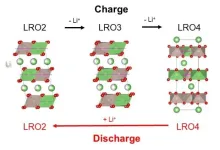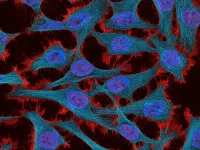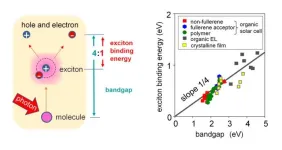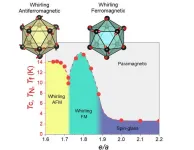Ancient chewing gum reveals stone age diet
2024-01-18
(Press-News.org) What did people eat on the west coast of Scandinavia 10 000 years ago? A new study of the DNA in a chewing gum shows that deer, trout and hazelnuts were on the diet. It also shows that one of the individuals had severe problems with her teeth.
Some 9 700 years ago, a group of people were camping on the west coast of Scandinavia, north of what is today Göteborg. They had been fishing, hunting and collecting resources for food. And some teenagers, both boys and girls, were chewing resin to produce glue, just after munching on trout and deer, as well as on hazelnuts. Due to a bad case of periodontitis (severe gum infection that can lead to tooth loss and bone loss), one of the teenagers had problems eating the chewy deer-meat, as well as preparing the resin by chewing it.
We know this because an international research team has been working with the chewed resin from Huseby Klev for some time. “There is a richness of DNA sequences in the chewed mastic from Huseby-Klev, and in it we find both the bacteria that we know are related to periodontitis, and DNA from plants and animals that they had chewed before”, says Dr. Emrah Kırdök, from Mersin University Department of Biotechnology, who coordinated the metagenomic work on the Mesolithic chewing gum. Emrah Kırdök started to analyse the material when he was a postdoc at the Department of Archaeology and Classical Studies at Stockholm University, but the study has grown much since then.
The site Huseby Klev on the island Orust was excavated 30 years ago. Chewed resin was found together with remains of stone tools in a context dated to c. 9700 years ago. The stone material also indicated a Mesolithic chronology. The chewed material from Huseby Klev has already generated a study on the human genetic data from three individuals, and the DNA in the material that was not of human origin has also been analysed and published.
Identifying the different species present in the kind of mix of DNA that was present in the Mesolithic chewing gum was challenging. Dr Andrés Aravena, from the Department of Molecular Biology and Genetics at Istanbul University spent much time on the computer analysing the data together with Dr. Emrah Kırdök. “We had to apply several computational heavy analytical tools to single out the different species and organisms. All the tools we needed were not ready to be applied to ancient DNA; but much of our time was spent on adjusting them so that we could apply them”, concludes Andrés Aravena. Metagenomics on ancient DNA is an expanding area, but there have yet only been a few studies on this type of chewed material.
Professor Anders Götherström, at the Centre for Palaeogenetics, a collaboration between Stockholm University and the Swedish Museum of Natural History, is the head of the project where this study was conducted. “This provides a snapshot of the life of a small group of hunter-gatherers on the Scandinavian west coast. I think it is amazing, there are other well established methods to work out what nutrition and diet relates to the Stone Age, but here we know that these teenagers were eating deer, trout, and hazelnuts 9 700 years ago on the west coast of Scandinavia, while at least one of them had severe problems with his teeth.”
The study is published in Scientific Reports. Read article: Metagenomic analysis of Mesolithic chewed pitch reveals poor oral health among stone age individuals
Contact:
Anders Götherström, professor at Stockholm University and the Centre for Palaeogenetics
Phone: ++46739927864, e-mail anders.gotherstrom@arklab.su.se
Emrah Kırdök, assistant professor at Department of Biotechnology, Mersin University
Phone: ++90 505 416 88 72, e-mail emrahkirdok@mersin.edu.tr
END
[Attachments] See images for this press release:
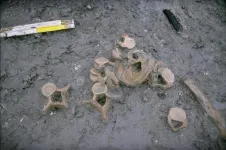
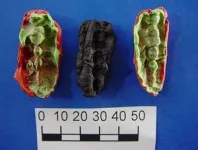
ELSE PRESS RELEASES FROM THIS DATE:
2024-01-18
1. A research team consisting of the National Institute for Materials Science (NIMS) and Softbank Corp. has found that voltage hysteresis in Li2RuO3—a high-energy-density rechargeable battery cathode material—is caused by differences in the intermediate crystalline phases formed during charge and discharge processes. Voltage hysteresis is a phenomenon detrimental to lithium (Li)-ion batteries in which discharge voltage becomes significantly lower than charge voltage. These results revealed a voltage-hysteresis-causing mechanism inconsistent with conventional theory.
2. ...
2024-01-18
In the switch to “greener” energy sources, the demand for rechargeable lithium-ion batteries is surging. However, their cathodes typically contain cobalt — a metal whose extraction has high environmental and societal costs. Now, researchers in ACS Central Science report evaluating an earth-abundant, carbon-based cathode material that could replace cobalt and other scarce and toxic metals without sacrificing lithium-ion battery performance.
Today, lithium-ion batteries power everything from cell phones to laptops to electric vehicles. One of the limiting factors for realizing a global shift to energy produced by renewable sources — particularly for the transition ...
2024-01-18
The College of Engineering and Computer Science of Florida Atlantic University received a $2.6 million grant from the National Science Foundation (NSF) to establish a scholarship program in the burgeoning and critical field of cybersecurity. The NSF’s CyberCorps® Scholarship for Service program seeks to increase the number of qualified cybersecurity professionals working for federal, state, local, territorial and tribal governments.
The program is managed by the NSF in collaboration with the United States Office of Personnel Management and the U.S. Department of Homeland Security. FAU is one of only six universities ...
2024-01-18
In a groundbreaking study published on January 18, 2024, in Cancer Discovery, scientists at University of California San Diego School of Medicine leveraged a machine learning algorithm to tackle one of the biggest challenges facing cancer researchers: predicting when cancer will resist chemotherapy.
All cells, including cancer cells, rely on complex molecular machinery to replicate DNA as part of normal cell division. Most chemotherapies work by disrupting this DNA replication machinery in rapidly dividing tumor ...
2024-01-18
[Boston, MA—January 18, 2023] The American Meteorological Society’s (AMS) 104th Annual Meeting will gather thousands of people at the Baltimore Convention Center 28 January–1 February to attend the world’s largest annual meeting focused on weather, water, and climate. The AMS is the professional society for everyone in the atmospheric and hydrologic sciences and services, including meteorologists, research scientists, emergency managers, academics, weather broadcasters, and more.
“The theme of our 104th Annual Meeting is ‘Living in a Changing Environment,’” says AMS President Brad Colman. “It’s ...
2024-01-18
New research has been published that identifies positive steps towards a better understanding of antimicrobial resistance (AMR), specifically in hospital-acquired pneumonia (HAP).
Antimicrobial, or antibiotic resistance, is a growing global issue, yet little is known about how to dose antibiotics to minimise bacteria developing resistance in patients. However, the University of Liverpool is playing a key role in contributing to international efforts to better understand AMR.
In a paper published today (Thursday 18 January), ...
2024-01-18
Researchers from McGill University, led by Professor Alanna Watt of the Department of Biology, have identified previously unknown changes in brain cells affected by a neurological disease. Their research, published in eLife, could pave the way to future treatments for the disease.
Spinocerebellar ataxia type 6, known as SCA6, is a rare neurological disease that disrupts the function in a part of the brain called the cerebellum, causing difficulties with movement and coordination. The condition results from genetic mutations, ...
2024-01-18
Considerable attention has focused on burnout and mental health of physicians and nurses on the frontline during the COVID-19 pandemic. First responders – law enforcement personnel, firefighters and emergency medical service (EMS) providers, also experienced increased levels of stress, anxiety and depression due to job-related pressures associated with the pandemic.
Given their exposure to work-related stress during this time, first responders may have been at considerable risk of developing problematic substance use. However, little is known about the factors associated with first responder drug and alcohol use during the pandemic.
A study by Florida ...
2024-01-18
Organic semiconductors are a class of materials that find applications in various electronic devices owing to their unique properties. One attribute that influences the optoelectronic property of these organic semiconductors is their "exciton binding energy," which is the energy needed to divide an exciton into its negative and positive constituents. Since high binding energies can have a significant impact on the functioning of optoelectronic devices, low binding energies are desirable. This can help in reducing energy losses in devices like organic solar cells. While several methods for designing organic materials with low binding energies have ...
2024-01-18
Quasicrystals are intermetallic materials that have garnered significant attention from researchers aiming to advance condensed matter physics understanding. Unlike normal crystals, in which atoms are arranged in an ordered repeating pattern, quasicrystals have non-repeating ordered patterns of atoms. Their unique structure leads to many exotic and interesting properties, which are particularly useful for practical applications in spintronics and magnetic refrigeration.
A unique quasicrystal variant, known as the Tsai-type icosahedral quasicrystal (iQC) and their cubic approximant crystals (ACs), display intriguing characteristics. These include long-range ferromagnetic (FM) ...
LAST 30 PRESS RELEASES:
[Press-News.org] Ancient chewing gum reveals stone age diet


